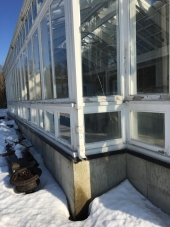








"the qualities of these bacteria, like the heat of the sun, electricity, or the qualities of metals, are part of the storehouse of knowledge of all men. They are manifestations of the laws of nature, free to all men and reserved exclusively to none." SCOTUS, Funk Bros. Seed Co. v. Kale Inoculant Co.





Paul Cereghino- Ecosystem Guild
Maritime Temperate Coniferous Rainforest - Mild Wet Winter, Dry Summer








organick wrote:
Thanks you guys. I appreciate the info.
Paul I checked in with the ag extension office and they said if the water runs through my property I can use it for irrigation. However am I doing damage to the system by taking from it? Altering the flow in any way is apparently a different story where I need to deal with soil conservancy in the county. I mean I have well water on the property I can also use as well as potentially rain barrels but I have issue with flow from the house to garden area... I figured if clean the water would be much healthier and full of nutrients but I obviously want no harm done.
The house sits about 12-15 up a hill from the water so any flow not contained is gonna enter the water way and I need to stay at least 10 ft off my house because we already have moisture issues. I am left with only a few feet and disturbing that would disturb the bank.
Perhaps I just need to sit with land in rain and shine and see what it has to say.
"the qualities of these bacteria, like the heat of the sun, electricity, or the qualities of metals, are part of the storehouse of knowledge of all men. They are manifestations of the laws of nature, free to all men and reserved exclusively to none." SCOTUS, Funk Bros. Seed Co. v. Kale Inoculant Co.




Brenda
Bloom where you are planted.
http://restfultrailsfoodforestgarden.blogspot.com/








 fZJW8iNOY
fZJW8iNOY




Paul Cereghino- Ecosystem Guild
Maritime Temperate Coniferous Rainforest - Mild Wet Winter, Dry Summer

|
Hey, sticks and stones baby. And maybe a wee mention of my stuff:
A PDC for cold climate homesteaders
http://permaculture-design-course.com
|



